Fuel for Fire: Framing Forest Resilience Three Years After the CZU Fire
photos and videos by Ian Bornath Photography
A Living Laboratory
San Vicente Redwoods is a living laboratory where we and our partners, Peninsula Open Space Trust, Land Trust of Santa Cruz County, and Save the Redwoods League, implement cutting-edge conservation strategies to heal and restore the forest and optimize ecological health and habitat diversity. Innovative fire mitigation tactics like prescribed burns, strategic thinning, and shaded fuel breaks help shift the forest towards more resilient, pre-colonial conditions, and reduce the spread of catastrophic wildfires and improve safety for nearby communities. Meanwhile, technologies like air curtain burners and carbonators help us deal with the aftermath of fire by safely and efficiently eliminating fuels from the land to protect the forest for future resiliency.
In 2020, this habitat of knobcone pine and chaparral burned at such high intensity in the CZU Fire that the soil is completely dried out and is a white powdery substance surrounding the utility pole. In 2023, the standing dead trees are nearly eclipsed by understory regrowth, both of which pose a risk of fueling a future fire to burn as intensely as CZU did here if left untreated
Reducing The Spread of Wildfire
San Vicente Redwoods has been treated for and with fire since its protection in 2013, but in 2020, when the CZU Fire ignited, fire treatment was not yet at the scale needed to fully protect its forests. Early 20th century clearcut logging, the forced end of Indigenous burning management, and decades of fire suppression led to a build up of vegetation across its vast landscape. Almost the entirety of San Vicente Redwoods’ 8,500 acres burned, making up nearly 10% of the CZU fire footprint. But not all wildfire impacts forest health in the same way: portions of the property burned at a high-severity, while other parts of the property burned at a low-severity. The latter, where understory burns from a slow-moving fire allowing much of the canopy and trees to survive is what fire mitigation tactics aim to achieve.
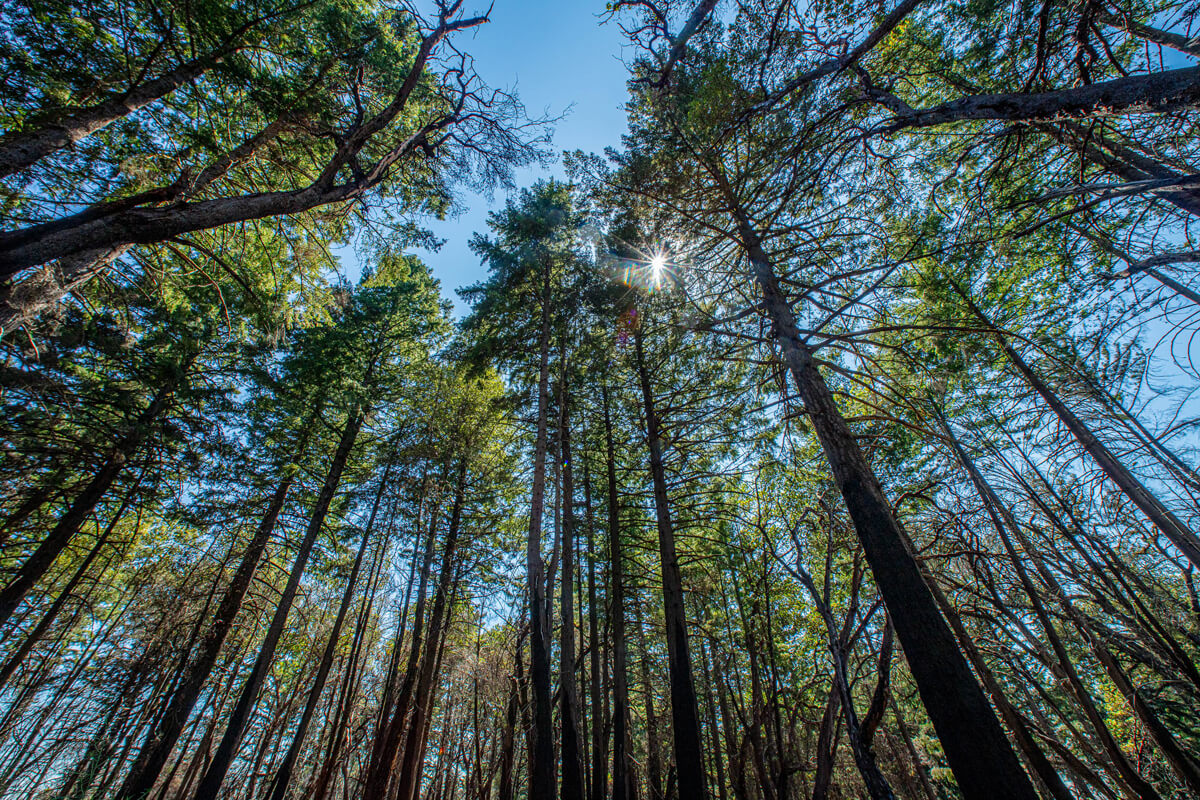
Tree trunks like matchsticks rise up to surviving and recovering green canopy above the charred marks left by the flames against a bright blue sky at San Vicente Redwoods three years after the CZU Fire
But while many parts of the forest were devastated by the CZU Fire, most of the redwoods will recover, largely because efforts to prepare it for–and with–fire still resulted in better protections for nearby communities and the forest. Shaded fuel breaks created in previous years in partnership with CalFire and the Bonny Doon Fire Safe Council reduced dry brush and understory vegetation that can speed a fire along. These fuel breaks likely decreased the heat and speed of the fire at San Vicente Redwoods as it neared neighborhoods close by.
A photo from 2020 after the CZU Fire could almost be mistaken for a display of autumn colors but few leaves or debris are on the forest floor. A photo in 2023 shows more green canopy above lush, dense green understory growth several feet high on both sides of the road
Traditional Ecological Knowledge and Fire Resilience
Partnering with Indigenous communities to center traditional ecological knowledge is a crucial component of fire mitigation strategies. Restrictive laws targeting Indigenous communities banned cultural burning throughout the 20th century, and it was not until January of 2022 that statewide law was passed to affirm the right to cultural burns. Sempervirens and our partners at San Vicente have worked closely with Amah Mutsun Tribal Band (AMTB), and Amah Mutsun Land Trust (AMLT), to return fire to the land. In 2016, AMTB reintroduced cultural fire to the San Vicente landscape with the first ceremonial burn in more than 200 years and AMLT is a partner across much of our fire mitigation work.
“A lot of our work is trying to mimic fire—removing invasive plants, decreasing overcrowded vegetation, burning biomass, putting nutrients back into the soil. Mechanical mimicry of fire is a need that comes out of the effects of colonization. Ideally the goal is to restore fire as an ecological process: one that has been practiced by Indigenous communities for millenia.”
— Ian Rowbotham, Senior Land Stewardship Manager
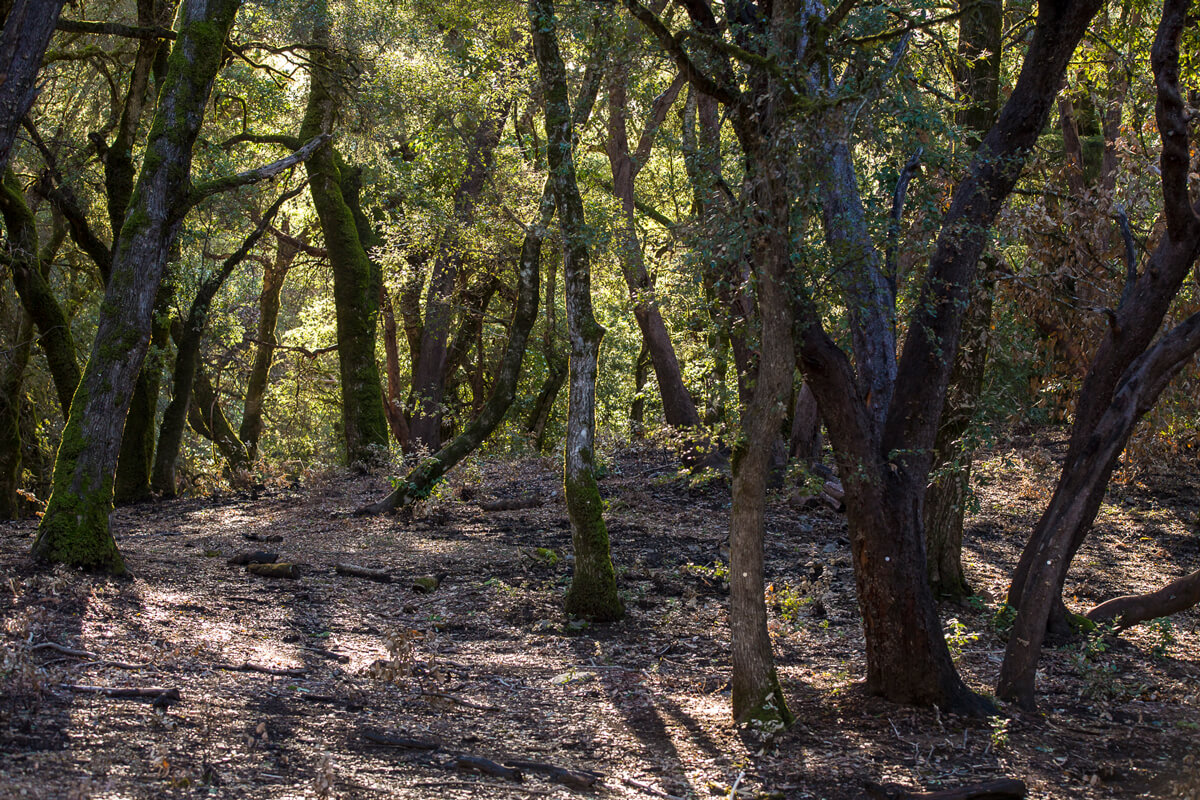
Rays of sunlight shine through four bright green leaves of a plant rising from the forest floor taking advantage of resources from prescribed burn at San Vicente Redwoods in 2017
Prescribed Burns
Prescribed burns are one of the most effective tools for promoting ecological resilience in the face of wildfire. Prescribed burns consume downed branches and dense understory plants to reduce the fuel available for future approaching wildfires, while also providing numerous benefits to the ecosystem.
Fire eliminates many of the understory fuels more efficiently than other mechanical options, returns nutrients to the soil, and can stimulate the growth of a wide array of native fire-adapted species. In February of 2020, Sempervirens Fund and our San Vicente Redwood partners teamed up with Cal Fire to perform a prescribed burn within the shaded fuel break in the San Vicente Redwoods along the ridgeline of Empire Grade. This burn mitigated the impacts of the CZU fire, while the surrounding areas were impacted by high-severity burns where fewer trees survived, the treated area was not: you can see healthy trees and green canopy growing on the treated area.
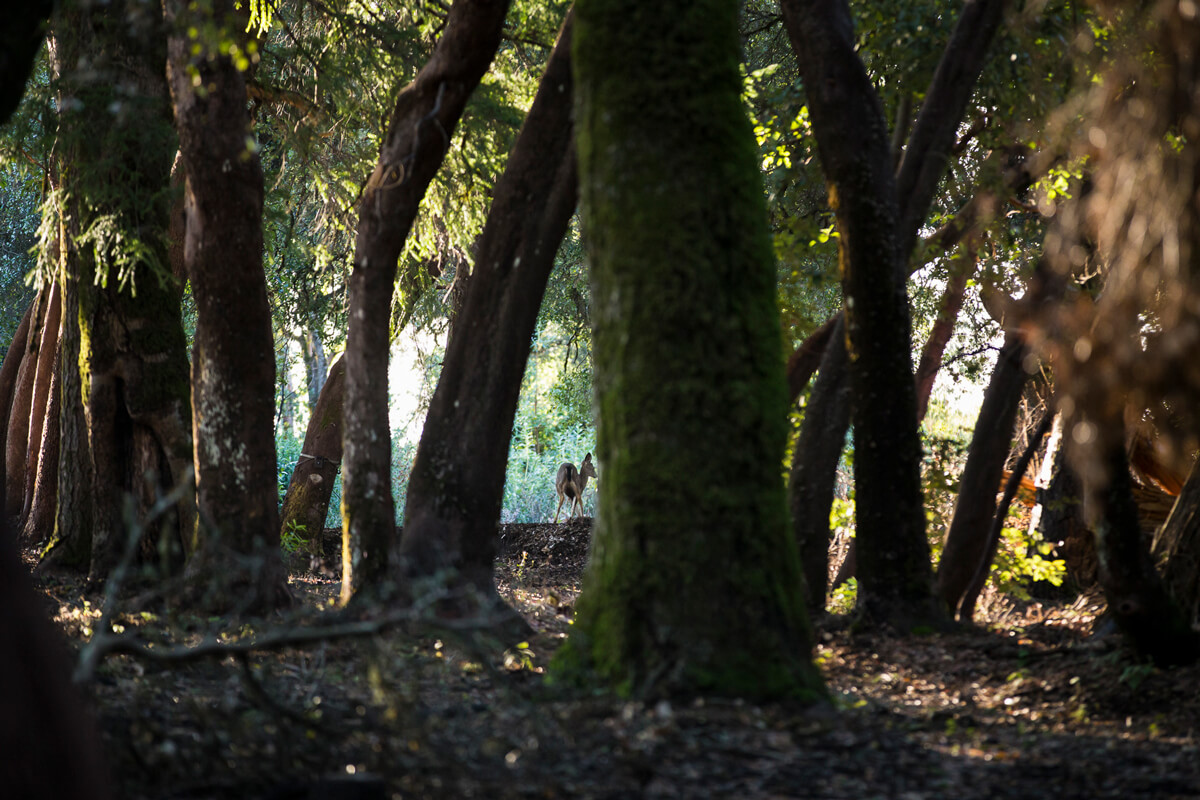
A black-tailed deer enjoys the new plant growth and easy movement across the forest floor after a prescribed burn that left the healthy overstory untouched at San Vicente Redwoods in 2017
The benefits of prescribed burns can be evident to the trained eye but in the forested areas of the Santa Cruz mountains, they are often partnered with shaded fuel break techniques which help to better control fire. “Prescribed burns are often done within a shaded fuel break or in an area surrounded by a fuel break,” Ian Rowbotham shares.
Shaded Fuel Breaks
Shaded fuel breaks thin understory vegetation while the overstory trees are left to shade the area and keep it cool, damp, and with slower regrowth. These strategic gaps in vegetation act like speed bumps to fire and likely decreased the heat and speed of the CZU fire at San Vicente Redwoods as it neared neighborhoods close by. Native Stewardship Corps members from the Amah Mutsun Land Trust and volunteers with the Bonny Doon Safe Fire Council have helped thin dense thickets of debris, with significant funding from Cal Fire, Coastal Conservancy, Natural Resources Conservation Service, and other agencies. To help slow the spread of fast-moving wildfires, crews will cut over 11 miles of shaded fuel breaks along roads and ridges and have thinned, or have plans to thin, over 500 acres throughout the forest.
A photo of blackened tree trunks with healthy green canopies intact above was treated with a shaded fuel break prior to the CZU Fire and burned less severely. A photo of mostly standing dead trees with only a handful of trees bearing green regrowth and much more dense understory growth along the ground was not treated with a shaded fuel break prior to the CZU Fire and burned more severely
Strategic Thinning
Some areas are too densely overgrown, from past clear cut logging and decades of fire suppression, to feasibly utilize a prescribed burn. By strategically thinning smaller trees spaced too closely together, more space is created between trees which can slow a fire’s spread as well as allow remaining trees to grow larger and more resilient to fires ahead.
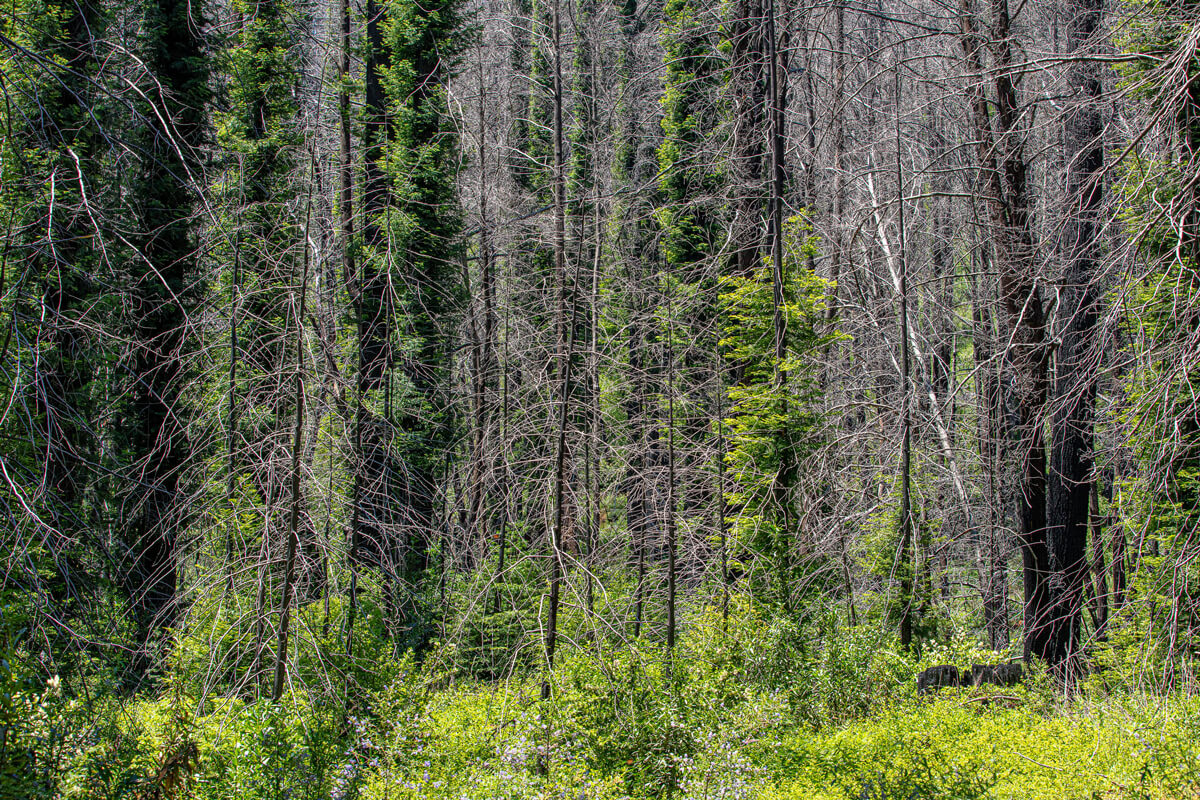
Helping to Eliminate Fuel After A Fire
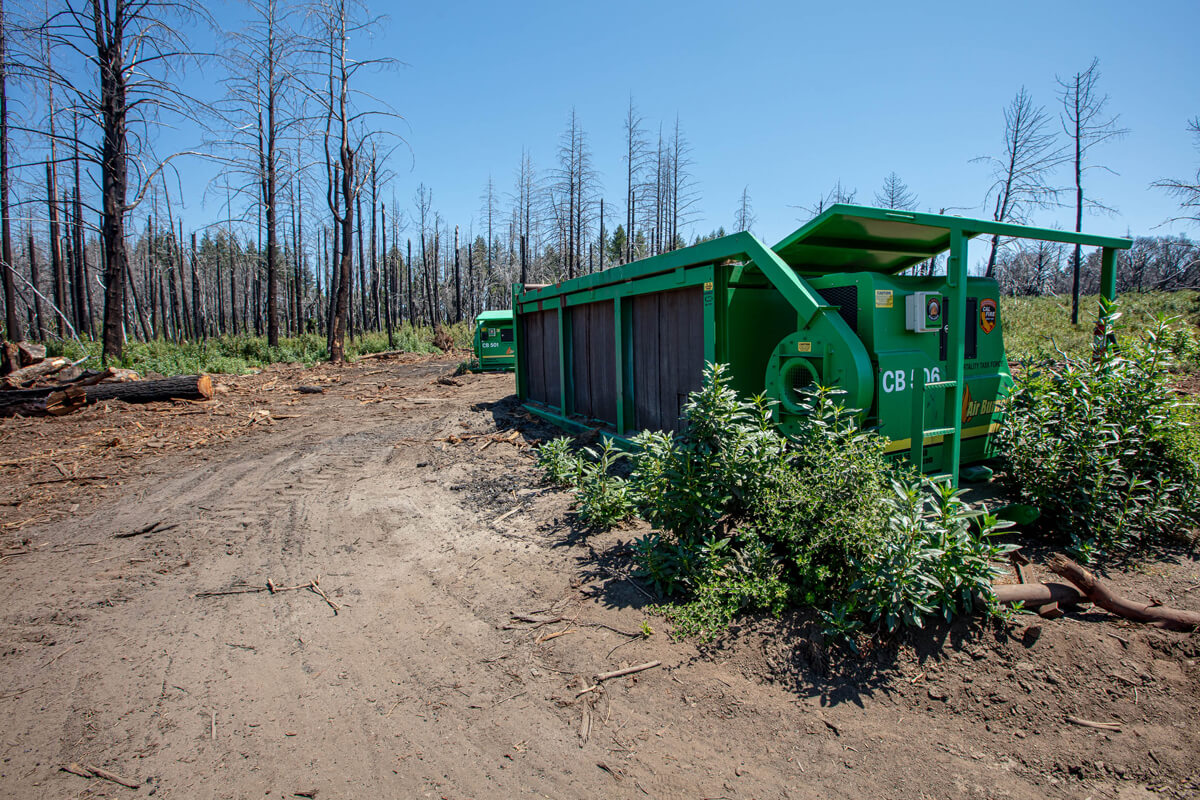
A green air curtain burner from Cal Fire sits in front of dead standing trees almost as far as the eye can see at San Vicente Redwoods
Air Curtain Burner
Air curtain burners may look like unassuming shipping containers on the outside but on the inside, they're closer to fire containers. A massive fire like CZU leaves lots of fallen and hazardous–threatening to fall–trees in its burn footprint. Trees that could potentially become fuel for the next fire if left behind.
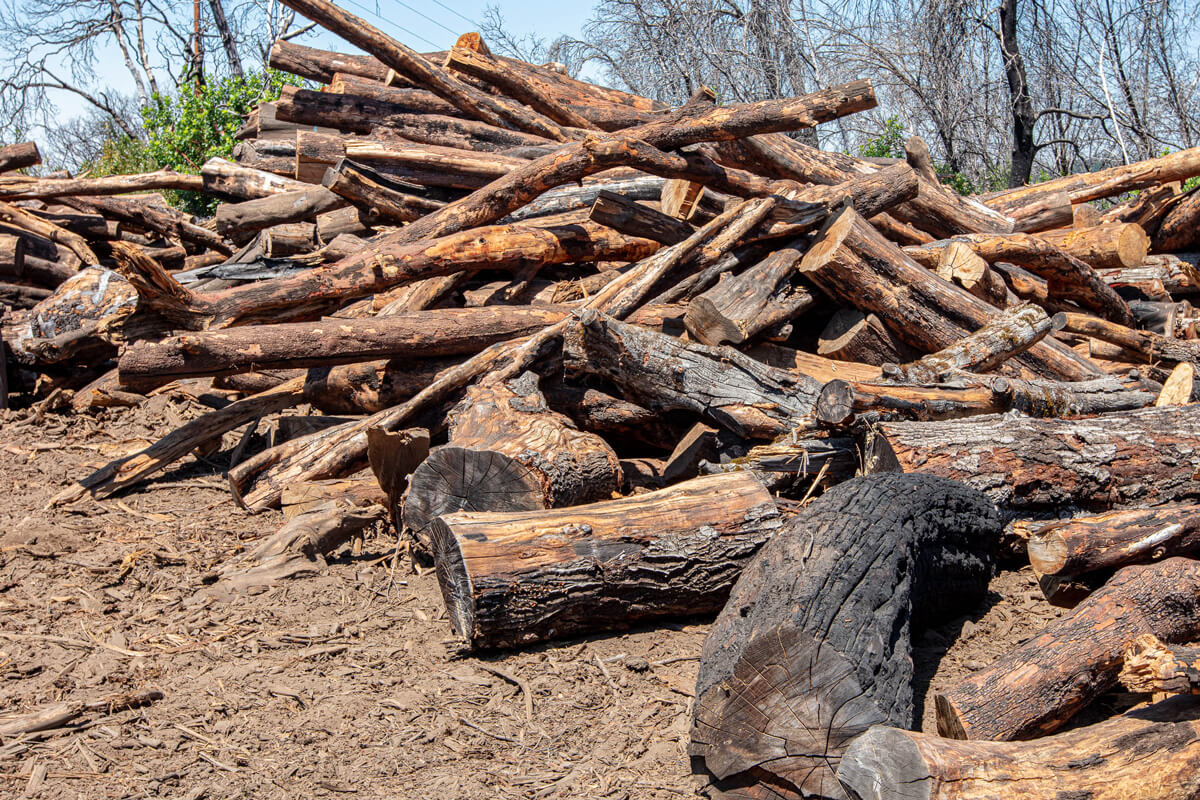
Wood that cannot be salvaged can be safely burned inside a curtain burner which consumes the wood beneath a blanket of air that constantly flows over the top—trapping heat and sparks inside—which allows it to be a safe and efficient way to reduce the abundance of fuel from the fire. Some curtain burners can also create energy from the burning process that can charge batteries or go back into the power grid. While curtain burners have been used around the state, the amount of dead trees left in CZU’s path across the Santa Cruz mountains has created novel conditions where the amount of wood not only exceeds the community and nature’s needs it poses a risk to them both necessitating some of their first use in the region.
Carbonator
Like an air curtain burner, a carbonator safely removes excess wood that could become fuel for a fire, it allows us to mimic fire conditions in multiple ways. Carbonators saves 10% of the biomass it consumes to produce “bio char” which can be used to return nutrients to the soil much as a fire would. The bio char can be repurposed for agricultural needs, providing nutrients for local organic farms.
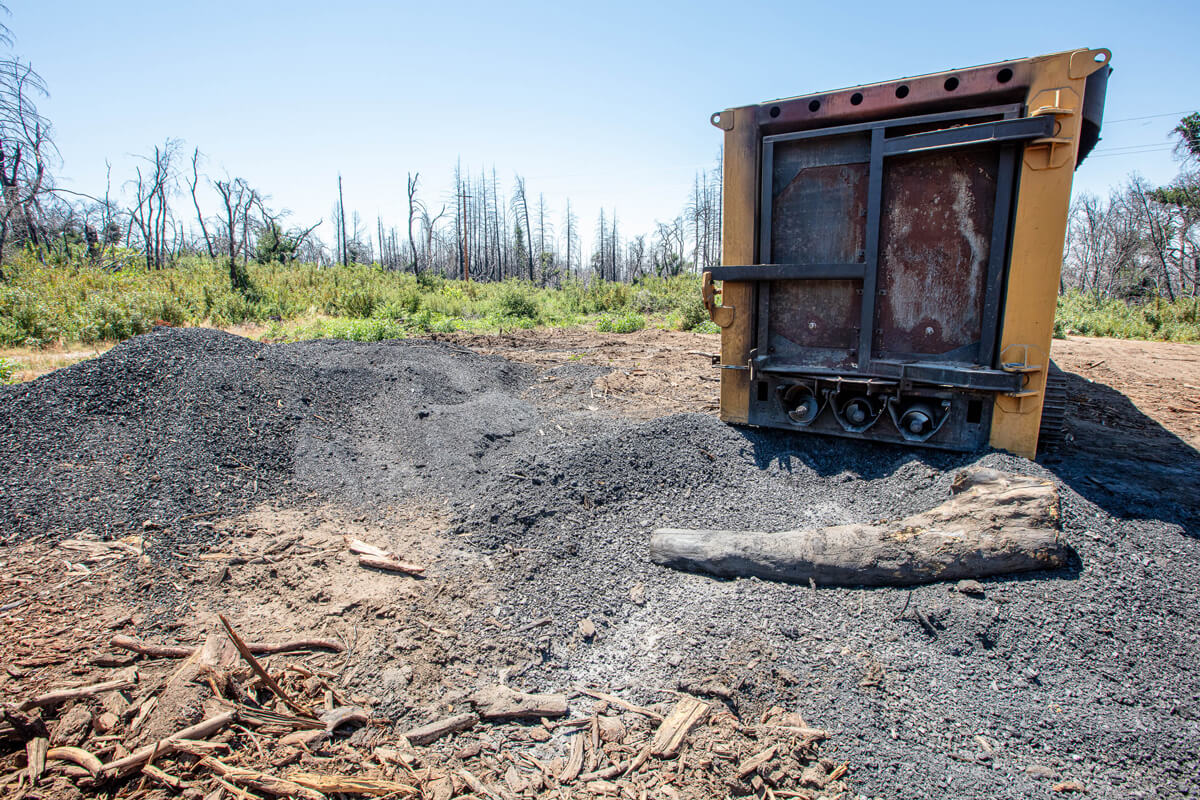
A carbonator sits behind a large gray pile of bio char, the 10% left behind after burning off the bio mass of dead trees that can be used to return nutrients to the soil mimicking fire
“We are trying to employ tried and true fire and fuel management techniques, but we are also using innovative strategies like curtain burners and carbonators in partnership with CalFire to deal with the novel conditions post-CZU fire to tackle the huge amount of fuel build-up. Curtain burners and carbonators are technologies used around the state but not as much in our region, in that way we are trying to think differently about tackling local issues. At the same time we are helping lead regional discussions about even more innovative solutions: can our curtain burners plug into the grid and actually produce electricity? Are there opportunities for locations or facilities to process the entire region’s biomass? Can we spur more of a local market for the hardwood and biochar?”
- Ian Rowbotham
Beyond Fire: Positive Impacts of Fire Mitigation Strategies
Beyond the immediate advantages for fire prevention and recovery, wildfire mitigation efforts simultaneously help improve forest health by increasing viable habitat and carbon storage as well as improved resilience to climate change. Catastrophic wildfire is devastating to communities, but fire mitigation strategies—including returning fire to the land through cultural and prescribed burns—have the power to heal.
More to Explore
- Read more about The Past, Present, and Future of Fire and Stewardship in Redwoods and Climate Part 3
- Hear more from Val Lopez, chairman of the Amah Mutsun Tribal Band in SemperVoices
- Visit San Vicente Redwoods to witness the forest's recovery

